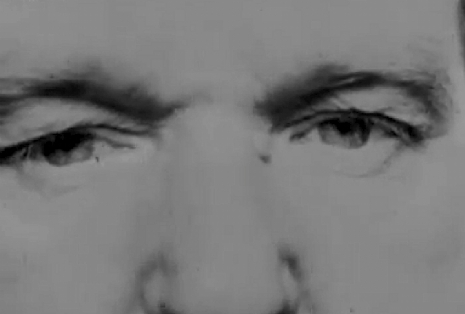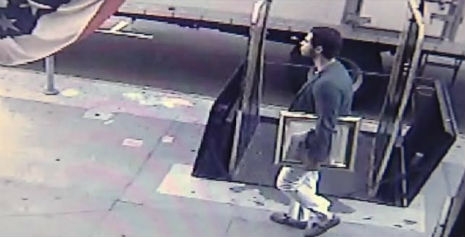
Pablo Picasso’s first attempt at poetry was a brief thank you note to the poet Guillaume Apollinaire written in French sometime around 1906. Picasso did not take the craft seriously until 1935 when at the age of fifty-three he began writing poems almost every day until the summer of 1959. Picasso started writing at a moment of crisis when he claimed he had given up painting after his wife Olga Khokhlova had left him and a messy divorce seemed imminent. He began by daubing colors for words in a notebook before moving on to using words to sketch images.
His writing owed much to the influence of Apollinaire and the Surrealists, and he received considerable support from writers such as the Surrealist poets André Breton and Michel Leiris, the latter describing Picasso as:
“[A]n insatiable player with words ... [who, like] James Joyce ... in his Finnegans Wake, ... displayed an equal capacity to promote language as a real thing (one might say) . . . and to use it with as much dazzling liberty.”
Artist and writer Roland Penrose said Picasso’s wrote word paintings where language was used as a painter used colors, can be seen in this poem:
...the blue memory borders white in her very blue eyes and piece of indigo of sky of silver the white white traverse cobalt the white paper that the blue ink tears out blueish its ultramarine descends that white enjoys blue repose agitated in the dark green wall green that writes its pleasure pale green rain that swims yellow green…
At first, Picasso kept his writing secret, but slowly began sending long letters and poems to his friends as his confidence grew and he developed his own distinct voice and style. His writing was mainly stream of consciousness, unpunctuated word association with startling juxtaposition of images and at times an obsession with sex, death and excrement. Picasso wrote hundreds of poems concluding with The Burial of the Count of Orgaz in 1959, and two plays Le Désir attrapé par la queue (1941), which was performed by Picasso, Jean-Paul Sartre, Simone de Beauvoir, under the direction of Albert Camus, and Les Quatre Petites Filles (1949). This is just a small selection culled from The Burial of the Count of Orgaz and Other Poems.
15 august XXXV
i am now here in the nest where the lamb and the bear—the lion and the zebra—the
wolf and the panther—the fox, the winter and the summer weasel—the mole and the
chinchilla—the rabbit and the sable weave in silence above an abandoned staircase
after the party has washed the week and wrung out the handkerchief raining a
perfume that wanders in search of its shape in a sad afternoon that has so many
reasons to stretch into the oil blue of a silk duvet the corner of his eye rips drowning in
shreds the landscape he sighed in the place where the beehive yearns to form its ice
17 august XXXVa cup of coffee courts the aroma everlasting
that corrupts the wing shaking a harmonium
caressing her timid white flesh as
kisses breeze through the window
fill the room with goldfinch words fluttering
in the ear soundless and singing
and laughing crazy trills through his veins
8-9 november XXXVbullfighter’s
jacket of
electric light bulbs
sewn with finest
needle
mist
invented by the bull
10 november XXXVon the dining room table above a colossal carpet color of dry blood the ashtray
packed with butt-ends looked just like a little death’s head that stuck out its tongue at
me today this very night november tenth a quarter after ten by now which with three
more should make eleven by the clock which then will strike the hour
12 november XXXVYoung girl correctly dressed in a beige coat with violet facings 150.000 – 300 – 22 – 95
centimes a madapolam combination checked and adjusted with an allusion to
hermine fur 143 – 60 – 32 a brassiere the open edges of the wound held separated by
hand pulleys making the sign of the cross perfumed with cheese (Reblochon) 1300 –
75 – 03 – 49 – 317.000 – 25 centimes openings up to date added on every second day
set into the skin by shivers kept awake by the mortal silence of the color lure genre
Lola of Valence 103 plus the languorous looks 310 – 313 plus 300.000 – 80 francs –
15 centimes for a forgotten glance on the dresser – penalties incurred during the game
– throw of the discus between the legs by a succession of facts which for no reason at
all succeeded in making themselves a nest and in some cases transforming themselves
into the reasoned image of the cup 380 – 11 plus expenses but the so academic draw-
ing model for all of history from his birth until this morning doesn’t cry even if one
steps on the finger that points to the exit but spits out his nosegay with the drinking
glass only the smell organized in regiments and parading by flag up front only if the
tickling of desire doesn’t discover the auspicious place to transform the sardine into a
shark the shopping list gets longer only from that moment on without the inevitable
stop at the table at lunch time to be able to write while sitting in the middle of so
many mixed hyperboles with the cheese and the tomato
14 november XXXVEugenia fragrant
little chapel of
guitar
strings
clothed in
poppy
black
carbuncles
15 november XXXVwhen the bull — opens the gateway of the horse’s belly – with his horn — and sticks
his snout out to the edge — listen in the deepest of all deepest holds — and with saint
lucy’s eyes — to the sounds of moving vans —tight packed with picadors on ponies —
cast off by a black horse — and escaping now and rising like a butterfly — the
mangled belly of the mare — a little white horse — sees inside the conduit which sings
as the blood dances trickling from a faucet in her breast — a circus horse — stands upright
on his feet rear end decked out with blue and silver — white and blue feathers set on
top atop his head — between his two ears — and a pair of hands applauding —
plucks his eyes out from in front – the team of mules that block his sight — that
bounce and drag — his guts along the sand — and screws the eye of the photographer
— somewhere above the banquet table — and pulls the wire out — a little at a time —
into the out of doors — and winds it in a ball — then draws a likeness of his face so
beautiful — onto a silver plaque — that spatters — clenched fist — clean — the sun
24-28 november XXXVtongue of fire fans the face inside the flute the cup
that singing nibbles the blue knife wound
lightly lightly
seated in the toro’s eye
inscribed inside its head adorned with jasmines
waiting for the veil to swell
the crystal fragment
wind wrapped in fold of cape two-handled sword
caresses gushing
handing bread out to the blind man and the lilac colored dove
its wickedness crammed tight against the burning lemon’s lips
with horn contorted
spooking the cathedral with its farewell gestures
swooning in his arms without an olé
a glance that blows apart the morning radio
that in its kisses photographs a bedbug sun
sucks out the fragrance from the dying hour
and moves across a page in flight
it tears the flowers into shreds and carries them away tucked in between a sighing
wing
and fear that still can smile
a knife that jumps for joy
right now this very day left floating in whatever way it wants to
this exact and necessary moment
at the summit of the well
a cry rose-colored
for the hand that casts it down
a little act of christian love
10 october XXXVI(I)
flesh decomposing in its miserable shagreen accordion squeezing the love-torn
body rapidly spinning the wool bleeding so in the despairing place in
the crown of thorns nest of twigs at the sound of the tambourine awakened
by the miserable memory left by the vomit that smells of jasmine
glued to the back of the eye wearing cafe tables as sashes wrapped round her
neck sounding the alarm reproducing her image in all the mirrors
with all the blows struck on the cheeks of her bells the tralalala of the
tralalalettes biting the rainbow’s neck the bra of the tempest caught
in a snare now whistles between the comb’s teeth and twists in her hands
the mirror asleep on her breast abandoned to its fate(II)
comical alphabet letter stitched on hot coal drunk from wineskin hand
distance color deleted from the list of mortals sinks claws in the
saving copper of forehead against stone if life cooks great banquet hall
feasts of cabbage smell on its knees in a corner his stew of hopes sing
Carmen sing and you Cleopatra and mice on the big fishermen’s bodies lined up
on the bank of the canal under the table open to the lie the chairs around
it rise and attach themselves to the walls of the director’s office of the
young villa Marie-Rose waiting for the frog to lick clean the hours that make
the fabric of her pretty umbrella sticky and if the weather is clear
listen to the crack when in my chest breaks the perfume of the
stick the arrow painted on the fan tossed on the bed the luminous alarmed panther
sheen of her regard with an electric aroma a most disagreeable noise
spreading a dreadful odor of stars crushed underfoot
2 july 38drop by
drop
hardy
pale blue
dies
between
the claws of
green almond
on the rose
trellis
This selection of Picasso’s poetry, The Burial of the Count of Orgaz and Other Poems, is available as a sampler from Ubu here. Below the complete three part documentary Picasso: Magic, Sex & Death presented by Picasso’s biographer John Richardson from 2001.
Via Ubu.








